Described as a mix of Groundhog Day and Shakespeare, Elsinore is Golden Glitch Studios’ first game and a Kickstarter-funded project. It’s already won awards like “Most Unique Game” at Power of Play 2017, and caught the attention of WIRED. Nominated again for IndieCade, Elsinore returned to the major independent game festival as a fully launched game now available for everyone to play.
While showcasing the Shakespearean title at IndieCade, game designer Connor Fallon spoke with Cliqist about the game’s origins and more.
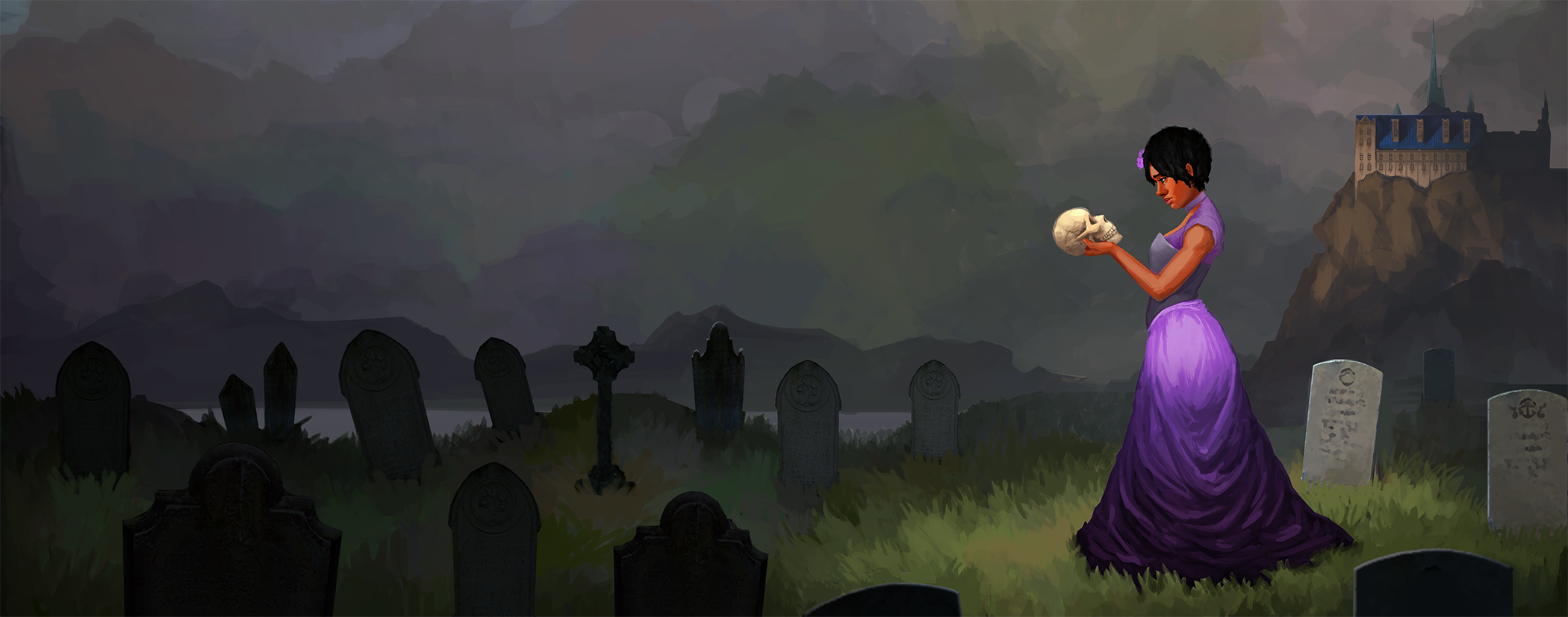
Summertime Iteration
“Way back in college, we were in a club, Game Creation Society,” Fallon says. He explains that the club would host random contests, and one of those contests had Shakespeare as the topic.
Katie Chironis responded to the prompt with what would eventually evolve into Elsinore, on which she would serve as the game’s team lead and writer.
But back then, it was too much for a short contest. Rather than abandon it entirely, Fallon says they instead iterated on it every summer, until they were ready to expand their team.

Concept art of the main cast from Elsinore‘s development blog.
Gathering Passions Together
Fallon shares that ultimately they worked with their friends to make Elsinore.
“We all came into the game with what we were passionate about,” he says. “The game as it came out is a sum of a lot of different passions.”
Fallon listed examples, describing how lead programmers Erik Butler and Kristin Siu advocated for the sim aspects of Elsinore. Technical artist Val Reznitskaya and artist Wesley Martin were responsible for making the art style look like a living painting. Engineer Duncan Boehle helped with everything that involved navigation.

According to Fallon, Chironis changed the Shakespearan language into something that would make for a more accessible story. (But if you know the original play, you will catch in-game references to it.)
As for his role on Elsinore, Fallon explains that he worked with figuring out what interactions would lead to what type of content unlocks, exploring a complex sim in the background, and how to connect to the game world. He also shares that the dominant problem to solve was making sure that players felt like they could keep track of information in Elsinore.
“We are all equal shareholders in the game,” Fallon says. But as Chironis had the original idea for Elsinore, Fallon shares that it was important to make her the guardian of the game.
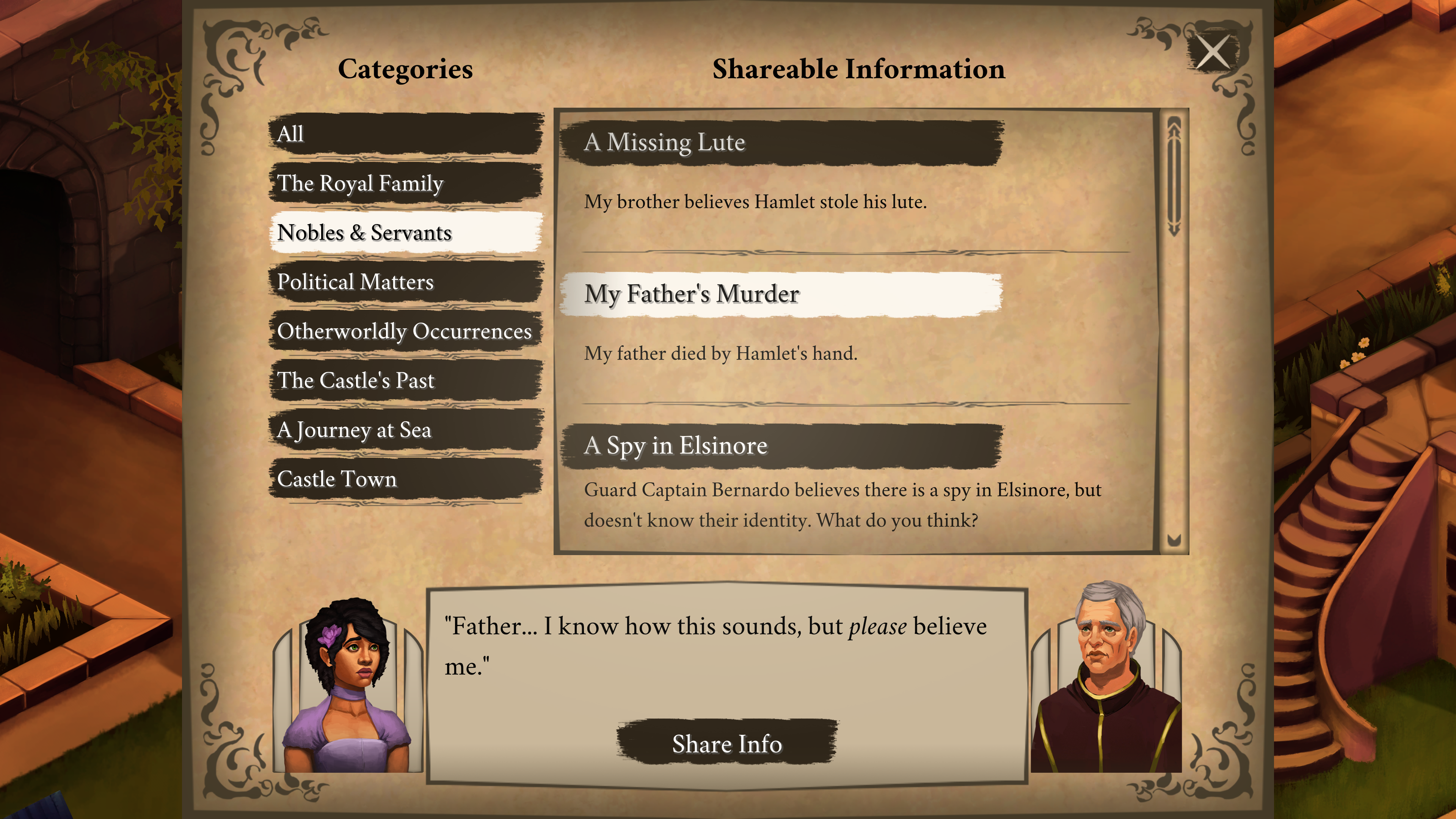
Ophelia Takes the Lead
Players take on the role of Hamlet’s Ophelia in Elsinore, rather than the eponymous prince of Denmark.
Fallon describes Ophelia as ideal for adapting into a game protagonist because she’s connected to everyone, but doesn’t do much in the original play. He adds that any changes people make while playing as Ophelia become dramatic by default.
“With Ophelia, [we’re] able to give you a lot more freedom,” Fallon says. According to him, if Hamlet was the player’s character, there would be more constraints.
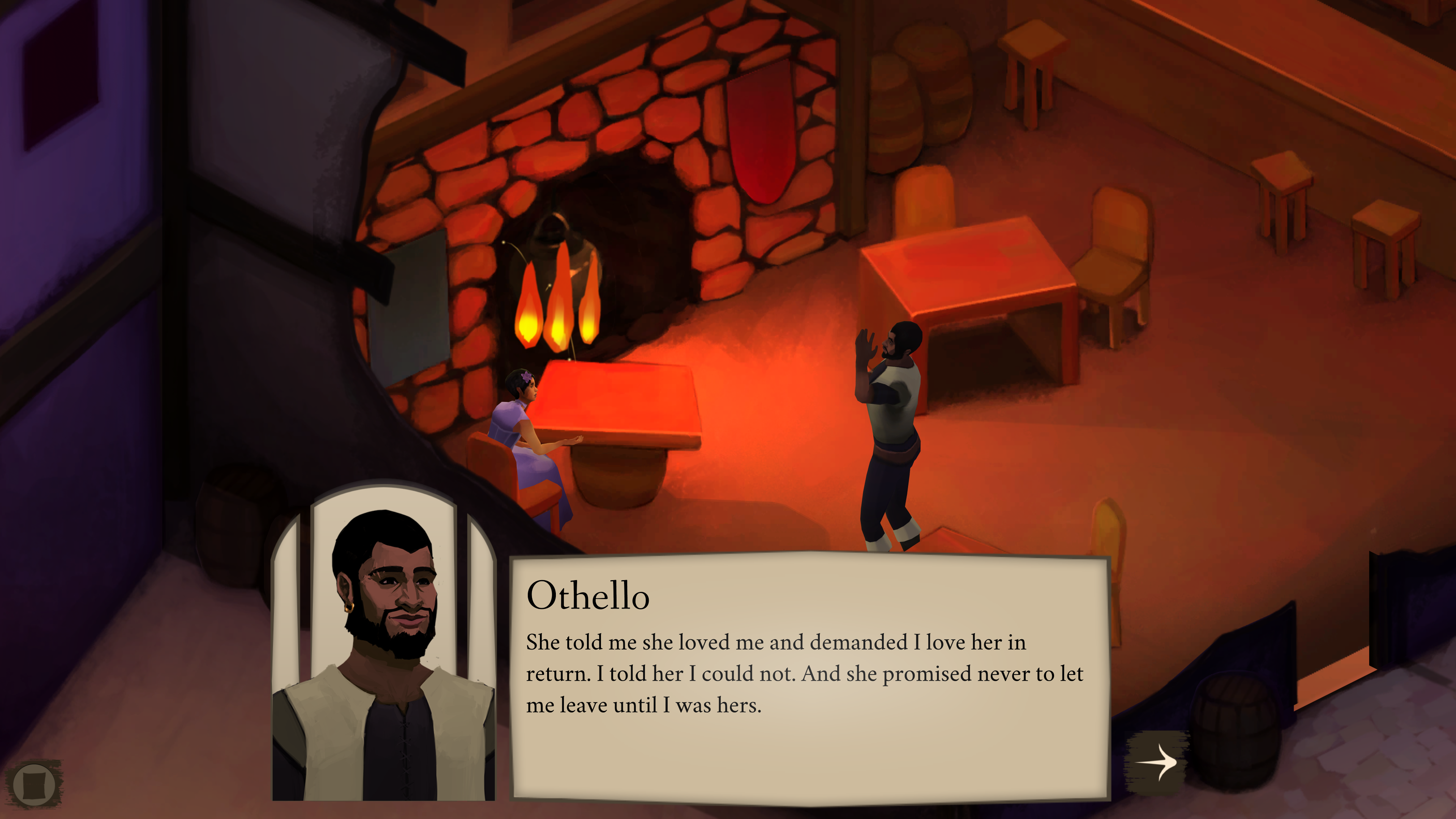
Ophelia can meet Othello for a Shakespearean crossover.
Fallon adds that it was definitely a team goal to also empower Ophelia. He explains that she’s this important character, a lot has been written about her — but she actually doesn’t get to do a lot in the original story, and she didn’t have to die to motivate other characters.
On a related note, some characters have been genderswapped. Fallon says that Rosencrantz and Guildenstern were reimagined as women, and other characters were added in Elsinore to offer more diversity. Even historical figure Captain Grace O’Malley has been incorporated into Elsinore. It’s a fascinating remix of a Shakespearean classic.
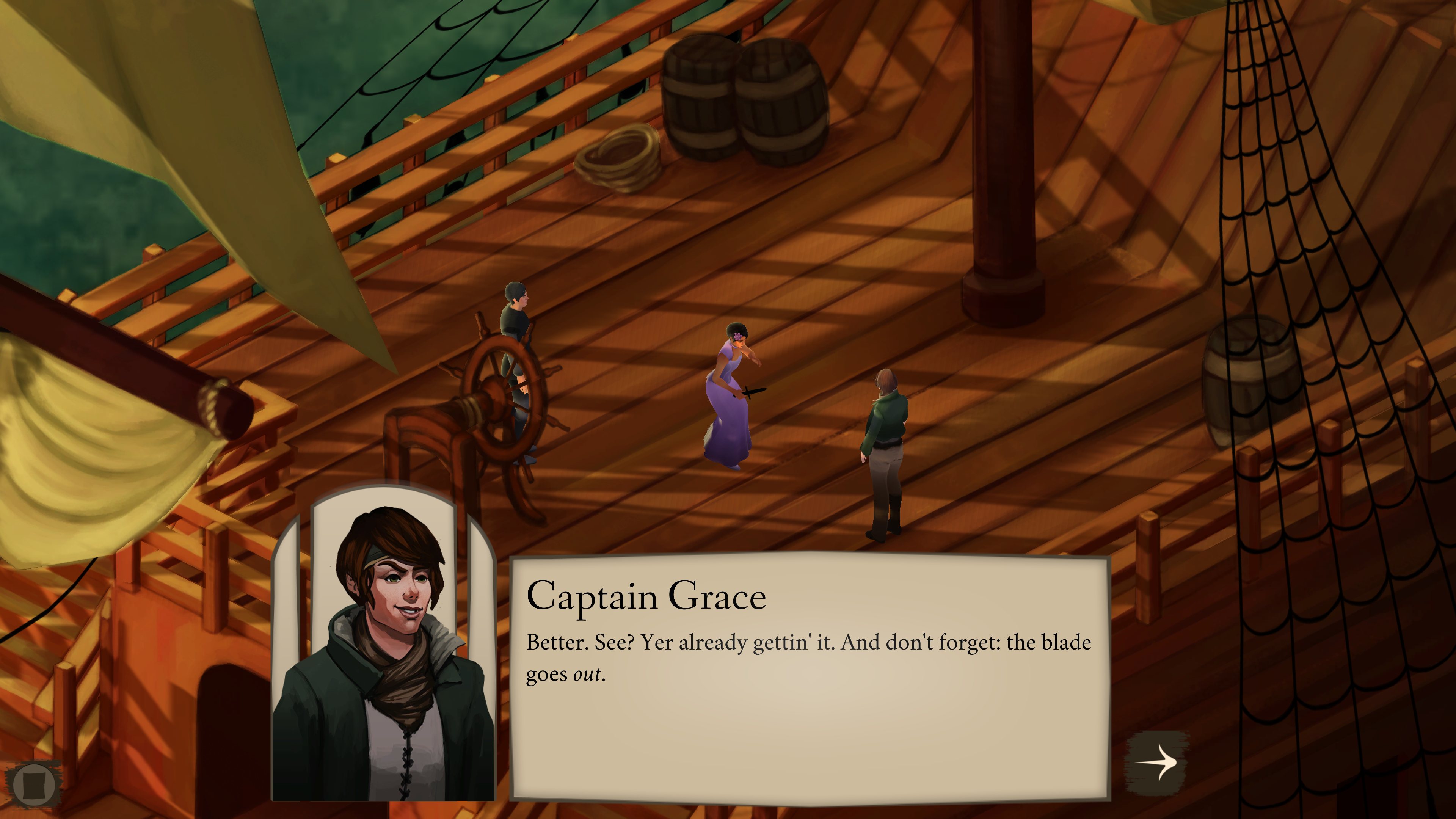
Prioritizing Timeline Alterations
Elsinore is about Ophelia trapped in a time loop as she tries to change the original events of Hamlet’s disastrous conclusion, including her own watery doom. But Fallon shares that though Ophelia may change the timeline, the people around her will find new ways to bring ruin down on themselves.
Can Ophelia save anyone then? Or is it impossible?
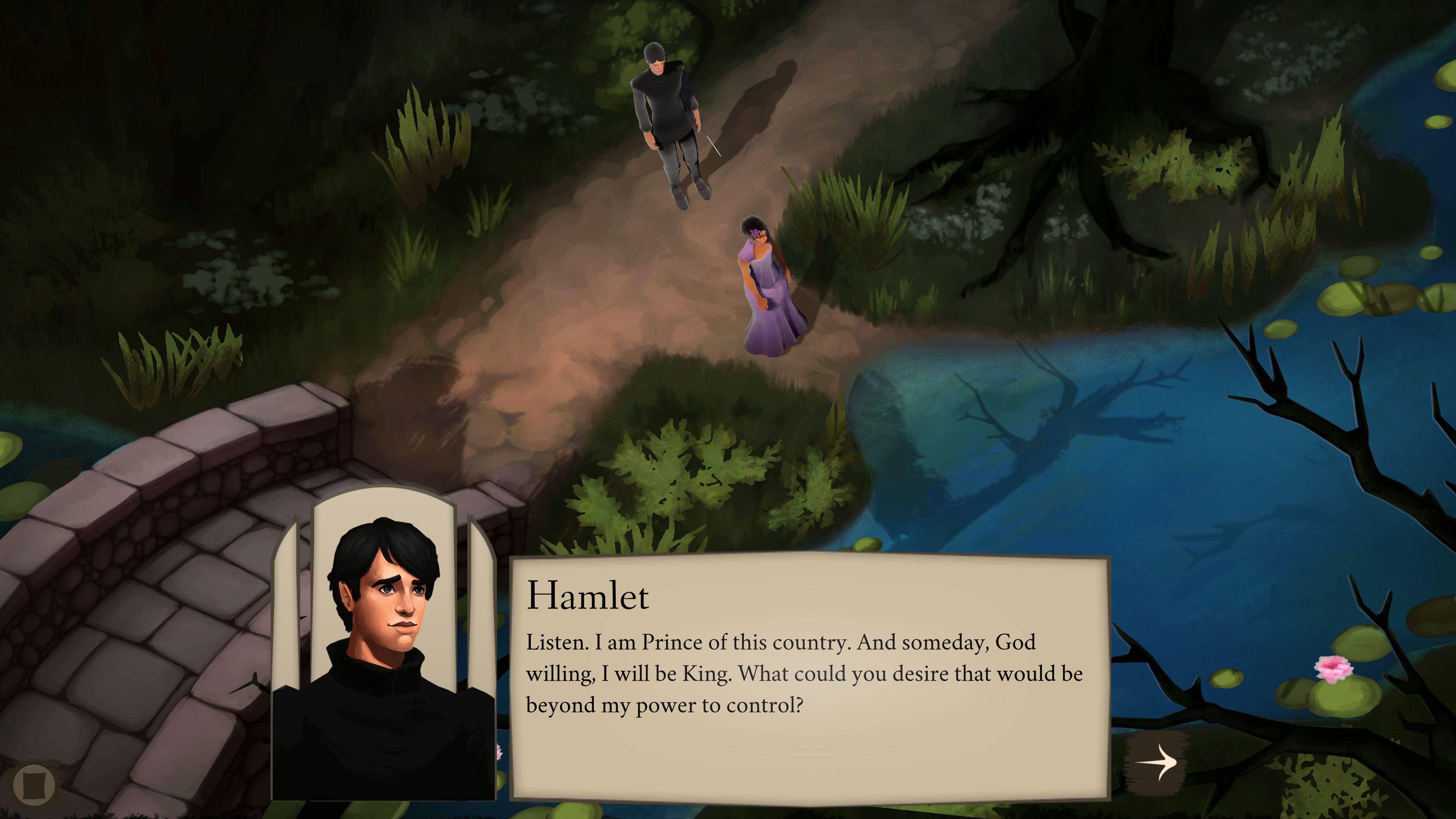
“One of the big things in Shakespeare is tragedy,” Fallon observes. He says that people wonder, ‘if only this happened instead, things would change for the better.’
“In the game’s context, you can make something happen differently,” Fallon says. But he adds that while the player can make good things happen, there’s a cost. Fallon shares that they wanted to encourage people to prioritize what matters most to them when they play Elsinore.
Companions in Game Development
Elsinore was a group effort that took Fallon, Chironis, and their friends six years to develop during their off-time. The team held down various jobs while they worked on Ophelia’s journey through time and space.

Fallon says influences for the game varied, including mechanical inspiration from The Legend of Zelda: Majora’s Mask, Ace Attorney, and The Sims.
Chironis is currently a senior game and narrative designer at Riot Games. Reznitskaya and Fallon both work at ArenaNet. Siu is a software engineer at Microsoft, Boehle is a programmer at Modumate, and Martin is the art director of Outer Wilds. Butler completed his Ph.D. and is a research engineer at Enlearn.
Though it took a lot of work, Fallon says it’s been rewarding to see players respond to Elsinore‘s sandbox nature and fulfilling to feel like they were making something novel. Working together to create Elsinore has been enjoyable.
“It’s nice to meet up with my friends every Sunday,” says Fallon.



